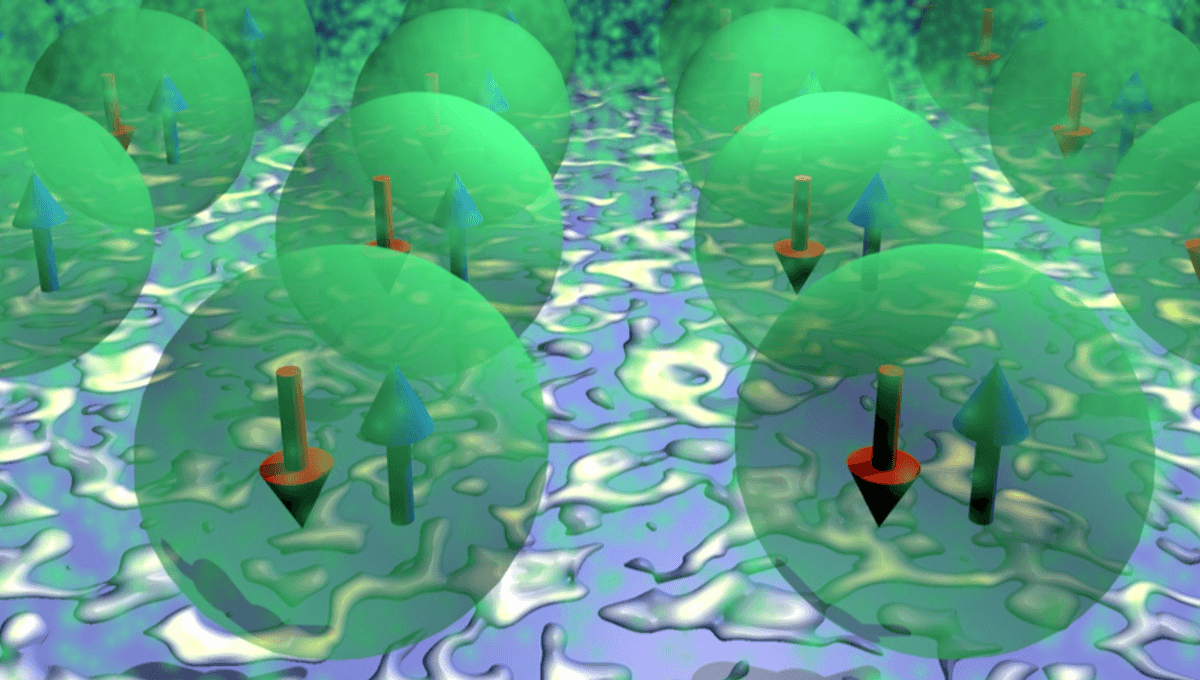
For the first time, researchers have been able to track the behavior of triplons, a quasi-particle created between entangled electrons. They are very tricky to study and they do not form in conventional magnetic material. Now, researchers have been able to detect them for the first time using real-space measurements.
Quasi particles are not real particles. They form in specific interactions, but for as long as that interaction lasts they behave like a particle. The interaction in this case is the entanglement of two electrons. This pair can be entangled in a singlet state or a triplet state, and the triplon comes from the latter interaction.
To get the triplon in the first place, the team used small organic molecules called cobalt-phthalocyanine. What makes the molecule interesting is that it possesses a frontier electron. Now, don’t go picture some gunslinger particle – a frontier electron is simply an electron on the highest-energy occupied orbital.
The team packed these molecules in a very small space, which forces the frontier electrons to interact together. From the outside, the team can see the joint behavior of the electrons, as they act as a triplon.
“Using very simple molecular building blocks, we are able to engineer and probe this complex quantum magnet in a way that has never been done before, revealing phenomena not found in its independent parts,” study author Robert Drost, from Aalto University, said in a statement. ”While magnetic excitations in isolated atoms have long been observed using scanning tunnelling spectroscopy, it has never been accomplished with propagating triplons.”
These kinds of quasiparticles need to be created by clever setups. You wouldn’t find them in natural compounds, so it is necessary to develop artificial material inside which quasiparticles can arise and can also interact in a way that can be measured.
“These materials are very complex. They give you very exciting physics, but the most exotic ones are also challenging to find and study. So, we are trying a different approach here by building an artificial material using individual components,” added study author Professor Peter Liljeroth, head of the Atomic Scale physics research group at Aalto University.
By forcing together the cobalt-phthalocyanine molecules in such a way, the team created an artificial material. Still, as materials go this was pretty simple, so they ramped up complexity. The work showed that the triplons can traverse molecular networks. There were entanglement waves moving through this, and they could be measured.
“We show that we can create an exotic quantum magnetic excitation in an artificial material. This strategy shows that we can rationally design material platforms that open up new possibilities in quantum technologies,” added study author Assistant Professor Jose Lado, also from Aalto University.
The findings are published in Physical Review Letters.
Source Link: Quantum Entanglement Waves Detected For The First Time